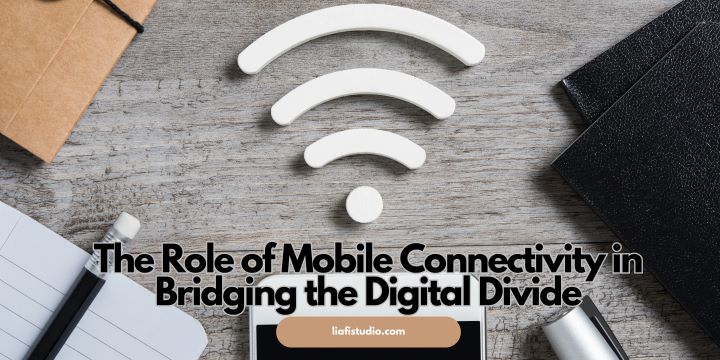Key Takeaways
- The shift from traditional phone systems to digital alternatives reshapes communication infrastructures worldwide.
- This transformation offers benefits such as cost-effectiveness, enhanced functionality, and flexibility.
- While promising, these changes necessitate strategic considerations for successful implementation.
Table of Contents
- Introduction
- The Decline of POTS: A Historical Perspective
- Embracing the Change: Why Digital Alternatives Matter
- Advantages of Switching to Digital Communication Systems
- Overcoming Challenges in Digital Transition
- Real-world Applications and Success Stories
- What’s Next? Future Trends in Communication Technology
- How to Prepare Your Business for the Digital Shift
- Conclusion: Embracing the Future of Connectivity
Introduction
As digital alternatives become ingrained in daily operations, organizations must reestablish their communication core to accommodate new systems. By doing so, they enhance operational capabilities and lay the groundwork for future innovations. Let’s delve into the existing paradigms of the Plain Old Telephone Service (POTS) and explore the compelling reasons behind the tectonic shift toward digital communication systems that promise to redefine connectivity and collaboration.
The telecommunication landscape is witnessing a monumental shift as the trend of POTS lines going away becomes prevalent. This significant evolution from century-old copper lines to digital networks represents more than a technological upgrade; it symbolizes a broader move towards efficiency and modernization in how we connect. As businesses and individuals adapt to this change, understanding the nuances of going digital becomes essential to harnessing its complete potential. The shift isn’t merely a necessity driven by technological advancements but is fundamentally inclined towards aligning with global business trends.
The Decline of POTS: A Historical Perspective
The humble beginnings of the Plain Old Telephone Service (POTS) marked a groundbreaking era in global communication. Its reliable and straightforward mechanism facilitated seamless voice transmission across distances, revolutionizing personal and business communications. However, as decades passed, the inherent limitations of POTS became more pronounced against a backdrop of digital innovation. A critical assessment of POTS reveals its high operational costs, limited bandwidth, and inability to keep up with the data demands of modern business environments. This historical context underscores the necessity for additional layers of connectivity that go beyond voice, integrating data-driven solutions.
Embracing the Change: Why Digital Alternatives Matter
The shift from POTS to digital communication platforms is catalyzed by the necessity for more scalable, versatile, and cost-effective communication tools. Digital alternatives, notably VoIP and cloud-based communication systems, offer unprecedented functionalities that cater to the dynamic needs of businesses today. By leveraging internet-based protocols, these systems enable many services, such as video conferencing, multi-user collaboration, and expansive data messaging, notably absent in traditional systems. A closer examination reveals why businesses embrace VoIP as a transformative force in minimizing communication barriers, fostering global collaboration, and enhancing overall operational efficiencies.
Advantages of Switching to Digital Communication Systems
Switching to digital communication systems offers multifaceted advantages increasingly appealing to enterprises of all sizes. Cost savings are one of the most immediate benefits, as digital systems typically incur lower call and maintenance costs than traditional lines. Moreover, the flexibility and scalability inherent in digital communications allow businesses to expand their operations without the burden of extensive infrastructure overhauls. These systems also support seamless integration with other business applications, enhancing productivity and streamlined processes. The ability to communicate across diverse platforms—whether through audio, video, or text—adds a layer of engagement and connectivity that POTS could never achieve.
Overcoming Challenges in Digital Transition
While promising, the journey from analog to digital is challenging. Common issues such as compatibility with existing systems, potential downtimes during transition, and cybersecurity threats must be meticulously managed. To overcome these, businesses are encouraged to adopt a strategic approach that includes thorough compatibility assessments, robust cybersecurity protocols, and employee training on new technologies. Addressing these areas ensures a smooth transition and paves the way for a secure digital communication environment that supports future growth.
Real-world Applications and Success Stories
Businesses across various sectors have begun to harness the potential of digital communication systems with notable success. Small enterprises, in particular, report significant improvements in operational efficiency and customer interaction since adopting VoIP and other digital platforms. Improved collaborative capabilities punctuate these success stories, reduced overhead costs, and the ability to offer enhanced customer service. Such transitions underscore the pivotal role that digital communication plays in redefining business landscapes, providing a testament to its transformative power in real-world applications.
What’s Next? Future Trends in Communication Technology
The communication technology arena is ripe for further innovations as it anticipates trends that will continue to shape connectivity. The advent of 5G promises faster and more reliable internet connections, which will bolster digital communication infrastructures significantly. Additionally, integrating AI and machine learning within these systems could revolutionize how communication is managed and analyzed. For businesses, staying informed on emerging communication technologies will be crucial in leveraging these advancements and maintaining competitive advantage.
How to Prepare Your Business for the Digital Shift
Preparation for the digital shift should encompass a strategic roadmap that businesses can follow to ensure successful implementation. Choosing the appropriate communication tools that support company objectives requires a thorough needs assessment. Fast-tracking digital literacy through training programs enhances employees’ ability to maximize the potential of new systems. Additionally, allocating resources toward adaptive technologies and fostering a culture of flexibility and innovation can facilitate smoother transitions while optimizing operations in the long run.
Conclusion: Embracing the Future of Connectivity
As POTS becomes a remnant of the past, digital communication systems emerge as the vanguard of modern connectivity, promising efficiency, scalability, and integration enhancements. This evolution reflects technological advancement and a necessity for forward-thinking businesses navigating the global market. Adopting digital alternatives signifies more than improved telecommunication; it represents the limitless possibilities of connectivity in the 21st century, urging businesses and consumers to embrace and adapt to these innovations for sustained success and relevance.




